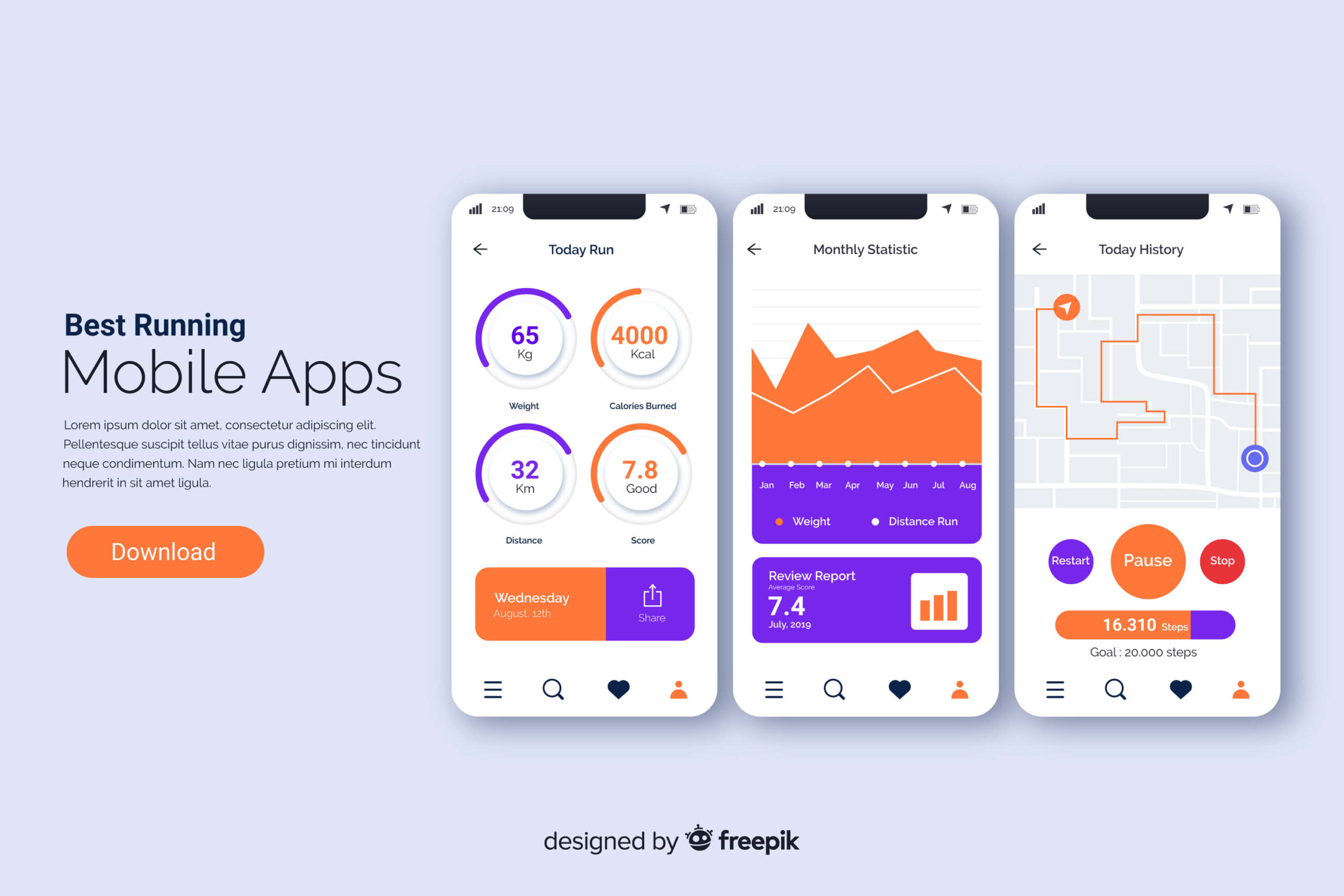
Color is one of the most powerful tools in UI design. It has the ability to evoke emotions, guide user behavior, and shape the overall perception of a digital experience. Understanding the psychology of color and how to use it effectively can elevate a user interface from functional to emotionally resonant, creating a stronger connection between the user and the product.
In this article, we’ll explore the role of color psychology in UI design, its impact on user behavior, and how designers can leverage this knowledge to create more engaging digital experiences.
What is Color Psychology
Color psychology refers to the study of how different hues affect human emotions and behaviors. It explores how colors can influence mood, decision-making, and perception. In the context of UI design, color choices can significantly impact how users interact with a website or app.
By using the right colors, designers can create an emotional response, convey brand identity, and even increase user engagement. Whether it’s building trust, promoting excitement, or calming the user, color plays a vital role in shaping user experiences.
The Impact of Color on User Perception
1. Emotional Influence
Colors are deeply tied to human emotions. For example, warm colors like red, orange, and yellow often evoke feelings of energy, warmth, and excitement. On the other hand, cool colors like blue and green are associated with calmness, trust, and relaxation. When users interact with a digital product, the colors they see can instantly set the tone of the experience.
2. Brand Identity
Colors also play a critical role in branding. Think about iconic brands like Coca-Cola (red) or Facebook (blue). These colors aren’t chosen randomly—they are integral to how users perceive the brand. In UI design, consistent use of brand colors can create familiarity and reinforce brand identity.
3. Cultural Significance
While certain colors evoke universal emotions, others can have different meanings in different cultures. For instance, white is often associated with purity and peace in Western cultures but can signify mourning in parts of Asia. Designers must consider the cultural context when selecting colors for a global audience.
Basic Color Psychology in UI Design
Understanding the emotional impact of colors can help designers choose the right palette for their UI. Let’s look at the basic psychological associations of some common colors:
- Red: Passion, excitement, urgency. Often used for calls to action (CTAs) or error messages.
- Blue: Trust, calm, security. Frequently used in banking or healthcare apps.
- Green: Growth, health, nature. Associated with positive actions like “confirm” or environmental themes.
- Yellow: Optimism, attention, warmth. Used to grab attention but should be applied cautiously.
- Black: Luxury, sophistication, power. Commonly used in high-end product websites.
- White: Cleanliness, simplicity, peace. Often used for minimalist designs.
Creating Emotionally Resonant Digital Experiences with Color
1. Establishing Mood with Color
When designing a user interface, one of the first considerations should be the mood you want to establish. Are you building an app for financial services? A calm, professional color palette like blues and greys may inspire trust and security. If you’re designing a fitness app, consider vibrant, energetic colors like red or orange to motivate users.
2. Using Color to Guide User Behavior
Color can also guide users through the interface. Call-to-action buttons (CTAs), for instance, often stand out with bright, contrasting colors to draw attention. Red or green are commonly used because they evoke urgency or positive reinforcement. The color contrast between the CTA and the background makes the action unmistakable, ensuring users know exactly where to click.
Similarly, error messages are usually displayed in red to indicate a problem or issue that needs immediate attention, whereas success messages might appear in green to signal that everything is going smoothly.
3. Consistency Across Platforms
Whether your product spans mobile apps, web apps, or desktop platforms, maintaining color consistency across all interfaces is essential for creating a cohesive experience. When users encounter the same brand colors across different platforms, it builds trust and familiarity, leading to better user retention and loyalty.
4. Accessibility Considerations
Accessibility is a critical aspect of color choices in UI design. Designers need to consider how colorblind users or those with visual impairments will perceive the interface. For example, relying solely on color to convey meaning (e.g., using red to indicate errors) may create confusion for colorblind users. Instead, consider adding text labels, icons, or other visual cues in addition to color to ensure that all users can navigate the app or website.
The Role of Color in UI Patterns
1. Dark Mode vs. Light Mode
Dark mode has become increasingly popular in UI design, providing users with a low-light alternative to traditional white backgrounds. Choosing the right colors for dark mode requires more attention, as contrast and legibility become even more critical. For dark backgrounds, lighter or muted hues should be chosen for text and icons, ensuring they remain readable without causing eye strain.
On the flip side, light mode is the more traditional layout with dark text on a light background. When designing for light mode, ensure that the contrast between the background and text remains strong enough to be readable in various lighting conditions.
2. Gradients and Depth
Using gradients can add depth and dimension to a flat UI. Gradients are combinations of multiple colors that transition smoothly from one to another. This effect can make buttons and backgrounds feel more dynamic, enhancing user interaction. However, gradients should be used sparingly to avoid overwhelming users.
3. Neumorphism
A relatively new design trend, neumorphism combines aspects of skeuomorphism and flat design to create interfaces that mimic real-world objects through soft shadows and color variations. In neumorphism, color plays a subtle but important role, creating shadows and highlights to give elements a 3D appearance. This trend adds a tactile quality to digital experiences, making users feel more connected to the interface.
Best Practices for Using Color in UI Design
1. Limit the Number of Colors
Using too many colors can create a confusing and cluttered interface. Stick to a core palette of 3-4 primary colors, with additional accent colors for secondary elements. This will create a clean, professional design that is easy to navigate.
2. Use Contrast for Readability
Ensure there is enough contrast between text and background colors to improve readability, especially for users with visual impairments. Tools like color contrast checkers can help ensure your design is accessible to all.
3. Test with Real Users
A design that looks great on paper may not always translate into a user-friendly interface. Test your color choices with real users to gather feedback on how they perceive and interact with the UI. A/B testing different color schemes can help you determine which palette creates the most engaging user experience.
4. Align Color with Branding
Ensure your color choices align with your brand’s overall identity and message. If your brand is known for its trustworthiness, opting for blues and greys may work better than bold, flashy colors like red or yellow. Consistent use of color across your app or website reinforces brand recognition and strengthens user loyalty.
Conclusion
The psychology of color in UI design is about more than just making things look aesthetically pleasing. Colors have a profound impact on how users feel, behave, and interact with a digital product. By understanding the emotional responses that colors can evoke, designers can craft emotionally resonant digital experiences that not only engage users but also build a lasting connection.
From guiding behavior with contrasting CTA buttons to establishing brand identity and enhancing readability through careful contrast, every color decision should be purposeful. With the right application of color psychology, your UI design can become an engaging, accessible, and emotionally impactful experience for users.
Devoq Design Company is a top-rated UI/UX Design Agency in Adelaide and UI/UX Design Agency in Gawler, providing innovative design solutions tailored to the specific needs of businesses in these areas. By focusing on crafting user-centric and visually appealing interfaces, Devoq Design Company helps clients in Adelaide and Gawler enhance their digital presence and deliver exceptional user experiences.







